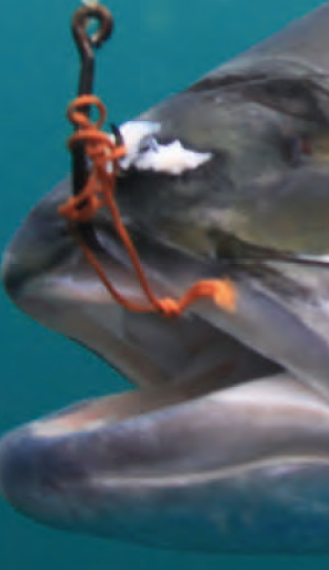
I love catching kingfish. They pull like freight trains and will bring an angler to their knees like no other fish. Better still, they are great eating and widely distributed in the waters around the southern half of this country.
An inshore coastal species, kingies favour natural features such as reefs, bommies, ledges, rocky islands and man-made structures like wharves and navigation buoys.
To find kingies in your local waters the first step is to drop in to the local tackle shop or use one of the fishing forums on the net. If you’re old school then you can simply look at marine charts and identify any major structure that is subject to current. Kings will stack up around the structure facing into the current.
Kingfish can be found in water with a temperature ranging from 16 to 25°C, but are most comfortable in water around 19 to 23°C. On the east coast this means that the North Coast fires in the winter and spring and the South Coast picks up during the warmer months as the East Australia Current pushes the tropical waters south. In cooler regions, such as South Australia, kingfish are best targeted in the spring when the water is warmest.
The tide also plays a role in the daily habits of kingfish. They will often come on the bite around the tide change, irrespective of the time of day. One of my favourite times to fish is during the build up to the full moon. It can pay dividends to keep a diary of the moon phase and your catch rate of kingfish to determine the best time to target them in your area.
The best technique is live baiting and a kingfish’s all time favourite is squid; alive or dead. You can’t skimp and buy packet squid from the servo either, you have to go and catch your own. Always hook live squid through the mantle – this will keep the bait alive and healthy for longer. Circle hooks offer the best hook-up rate and since they always lock in around the jaw hinge they are much easier to release.
When slow trolling live baits around headland and over inshore reefs I like to run two outfits; one on a flat line while the other has a sinker attached to weigh it down holding it deeper in the water column. One trick I employ is to stop when I mark fish on the sounder allowing the weighted baits to sink down to the fish.
In water deeper that 25 metres the best approach is to drift over spots like wrecks and reef edges. It’s really important to use the sounder and GPS to get you right on top of the action because, just like humans, if you put it right under their nose they will eat it.
During the cooler months large schools of kingfish hold over deep reefs. Live baits will work but when bait is hard to come by jigging is a great alternative. The new high-speed jigs are easy to use and the kings will climb all over them.
There is a wide range of jigs out there and the basic rule is the deeper the water the bigger the jig. Using the depth sounder, position the boat directly over the school and free spool the jig right to the bottom, then crank it back relatively fast with a jerky stop-start style action. Be warned, though, because kingfish hit like a runaway train so hang on.
One final method worth mentioning that is highly exciting is fishing with surface lures. Poppers like the infamous Roosta can create some insane strikes when the kingies are feeding on the surface. Apart from targeting schools of surface feeding fish, you can also score blind strikes when casting around bommies and man-made structure like navigation markers. To get the most out of surface lures vary the speed of your retrieve. Generally, a slow, stop-start approach will produce the best results.
Few species excite southern anglers as much as the kingfish. The best part is you don’t even need a boat. Reach a remote headland that drops away into deep water and start firing out metal slices and chances are you will connect. Landing it, however, is a whole new challenge but that is half the fun of taking on the king of the reef. I guarantee you will enjoy the fight.

Category: Unknown
Written: Sat 01 Mar 2014
Printed: March, 2014
Published By:
TACKLE
Kingfish are a tough opponent and require serious tackle to beat. This is particularly so when fishing in heavy reef areas, where there is a very real chance that the fish will bury you. As a result, the best way to handle kingfish is by simply using heavy tackle. Overhead reels were once used exclusively for mega kingfish but the modern spin reel like the Stella is now capable of tackling the biggest fish. With no sharp teeth, a short 20 to 40kg trace is usually enough to handle these fish, although heavyweight specimens in the 15kg-plus category are better off targeted with at least 50kg trace. There is no need for long traces and in most instances 1 to 2m (3 to 6ft) will suffice. When it comes to hooks live bait style in sizes from 5/0 to 8/0 are the most popular for squid while 7/0 to 10/0 circles are best for fish, alive and dead.